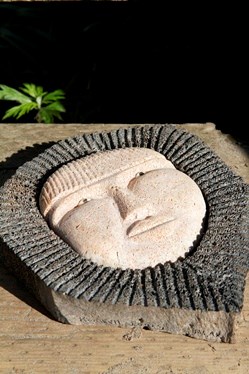
NPS Photo - Allyce Andrew Many of the stories told about Bering Land Bridge National Preserve are focused on its prehistory, but the more recent past and present-day cultural traditions of Northwest Alaska are just as important. Deeply-rooted cultural practices and traditional subsistence hunting and gathering are still a part of everyday life for most Inupiaq communities around the Seward Peninsula. The protection of resources within Bering Land Bridge helps to support these lifestyles and communicate the importance of Alaska Native heritage in a holistic context. Today's cultural groups of the Seward Peninsula remain closely tied to the ancestors who first crossed over from Siberia, and many still have living relatives on the Asian side of the Bering Strait. Up until European contact in the 19th century, these groups led mobile subsistence lifestyles, moving seasonally with food availability and thriving off the land and the sea. By the 1850s however, the commercial whaling, fur trade, and mining industries caught on that Alaska really was the last frontier, and, despite a sometimes harsh climate, offered the supply needed to meet the growing demands of the world. Unfortunately, however, along with unsustainable practices of harvesting these resources also came irreversible changes to the Alaska Native groups that inhabited the land for thousands of years before European contact. In 1884, the US Bureau of Education appointed Sheldon Jackson as a special agent for Alaska to establish schools and missions in Native communities throughout the Seward Peninsula. Jackson was under the impression that these groups were living in poor conditions, some just barely surviving, but this was actually a misunderstanding of cultural and lifestyle practices. It turns out that Jackson first visited the Inupiat during a normal seasonal resource shortage and mistook it for chronic starvation without considering the cyclical nature of resource availability in the arctic. Regardless, the most enduring of Jackson's undertakings was the establishment of reindeer herding on the Seward Peninsula in response to the perceived needs of the Inupiat. Working as an apprenticeship program, reindeer were imported from Siberia and young Inupiaq men were trained in herd management, as well as taught agricultural methods and English. This program essentially changed not only the traditional subsistence lifestyle of the Inupiat, but also the social organization and health of their communities. With an increasingly sedentary lifestyle, villages were hit hard by disease epidemics such as the 1918 influenza, which wiped out significant portions of the population. Populations have recovered over time, but communities continue to work hard to preserve and promote the cultural traditions that have made them who they are today. Places with Cultural Significance Within the Preserve Parts of the Seward Peninsula have been inhabited by humans for at least 12,000 years. The early people to live on the peninsula took advantage of the natural features of the area to survive the sometimes harsh arctic environment. People living close to the preserve continue to use the natural features of the preserve for traditional subsistence hunting and gathering activities. 
For a long time, life on the Seward Peninsula followed a seasonal pattern that rarely 
Winter changes the landscape of the Bering Land Bridge National Preserve into a 
Imuruk Lake borders the northern edge of the Imuruk Lava Fields in Bering Land Bridge 
During the summer, Kuzitrin Lake inspires a sense of awe as the drifting white clouds reflect 
Every spring, a flood of migrating birds descends upon the land inside the Bering |
Last updated: October 13, 2023
